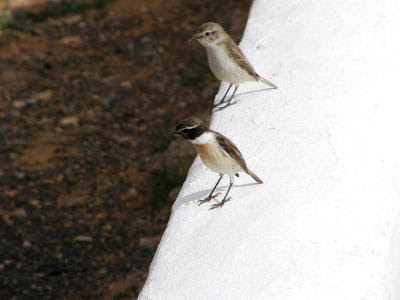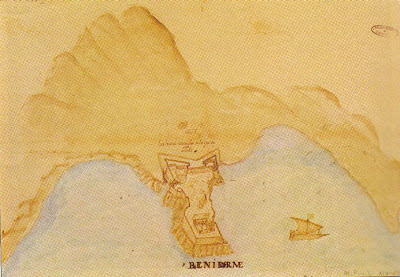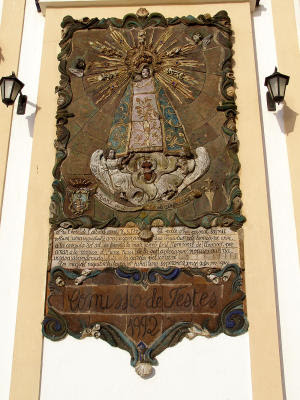Leaving behind the cold of Britain for a moment, we return to a few more pictures of Fuerteventura. Some of the bird life of the island is quite exotic looking, none more so than this fine Hoopoe. A bird we get in Britain from time to time in the summer months - although I have never seen one here.

Other birds which are seen in Britain but which were very tame in Fuerteventura were the Ravens. Wonderful, huge, black birds with fearsome-looking beaks, they are absolutely magnificent when seen close to.

Every morning we were greeted by a couple of Collard Doves on the balcony. Again, quite tame (one of which would even take food from your hand) they are another familiar bird of Britain.

Great Grey Shrikes are also occasionally seen in Britain. They are also known as Butcher Birds after their habit of impaling their prey on thorns, sharp twigs, barbed wire, etc in order to facilitate dismembering. Delightful habit! And they look so innocent.

A more unusual bird, seen almost everywhere on the island was the Fuerteventura Chat. Looking like a cross between the European Stonechat and Whinchat, it has become a distinct species only found on Fuerteventura. More
here.

Lastly, a small, inconspicuous bird seen all over the island was the Trumpeter Finch. Easily overlooked as it looks like a pale sparrow in a quick glance, when seen close up, it is quite beautiful with a pinkish colour all over, even in winter plumage. But it becomes more obvious that this is no ordinary finch when you hear it call. A strange, nasal note it is plain why it is called a 'trumpeter'.

 There are no discernible remains of the castle now but the 'placa' where it once stood is a wonderful part of the city and affords the visitor some great views of the beaches either side.
There are no discernible remains of the castle now but the 'placa' where it once stood is a wonderful part of the city and affords the visitor some great views of the beaches either side. White tiled, with whitewashed balustrades around, it's a lovely place to sit and enjoy the sun.
White tiled, with whitewashed balustrades around, it's a lovely place to sit and enjoy the sun. On the seaward side of the 'Placa' there is a long flight of stairs leading down to a smaller viewing platform. On a windy day the surf comes crashing up the rocks below and it then becomes clear why the whole promontory is beginning to overhang the sea - quite unnerving!
On the seaward side of the 'Placa' there is a long flight of stairs leading down to a smaller viewing platform. On a windy day the surf comes crashing up the rocks below and it then becomes clear why the whole promontory is beginning to overhang the sea - quite unnerving!




















